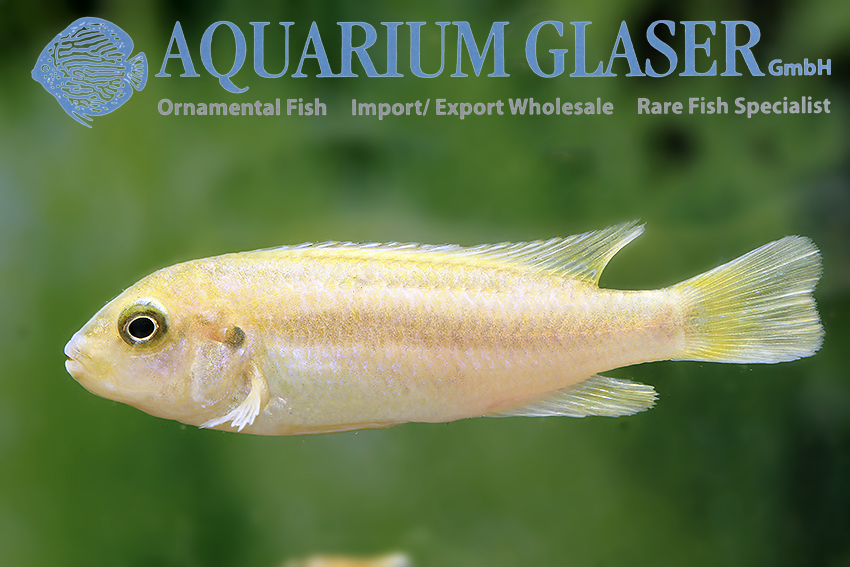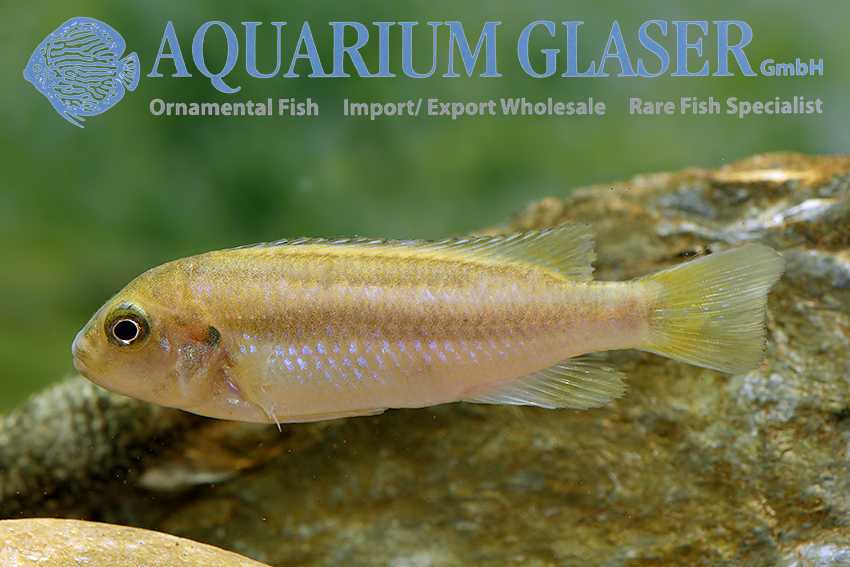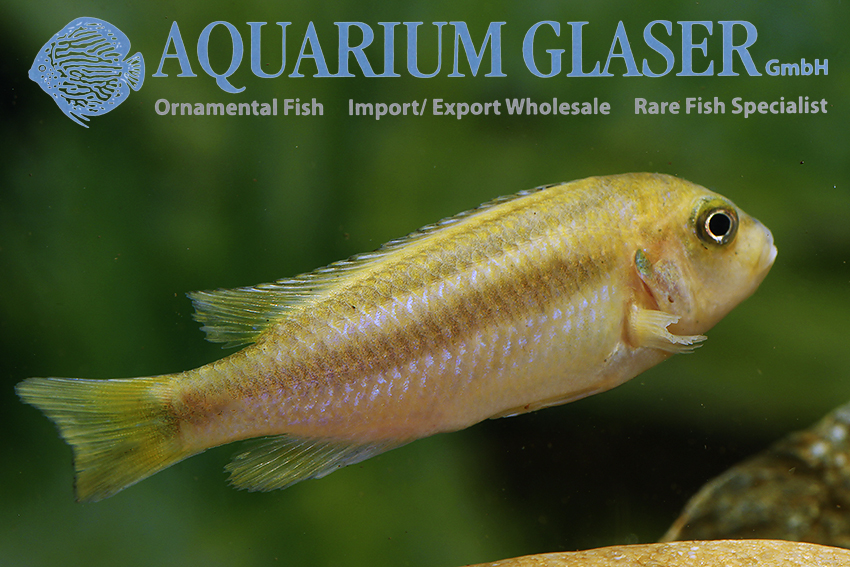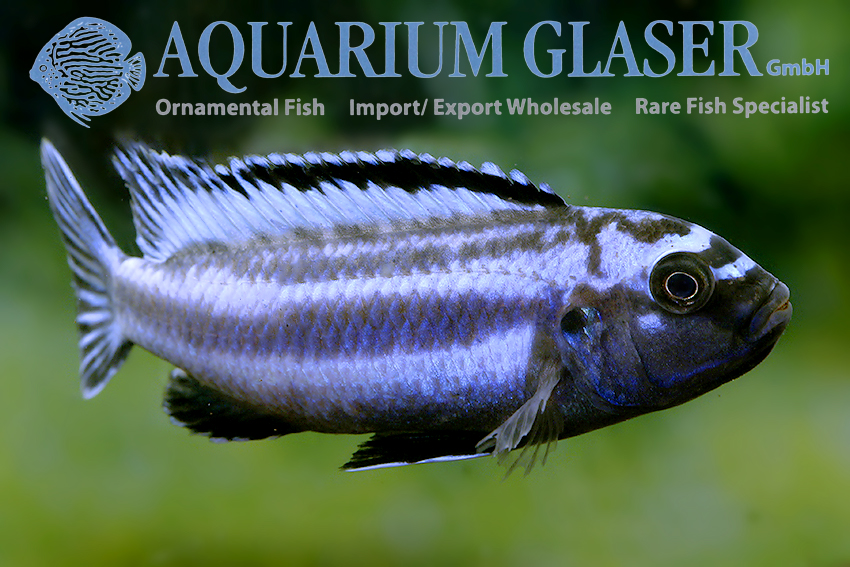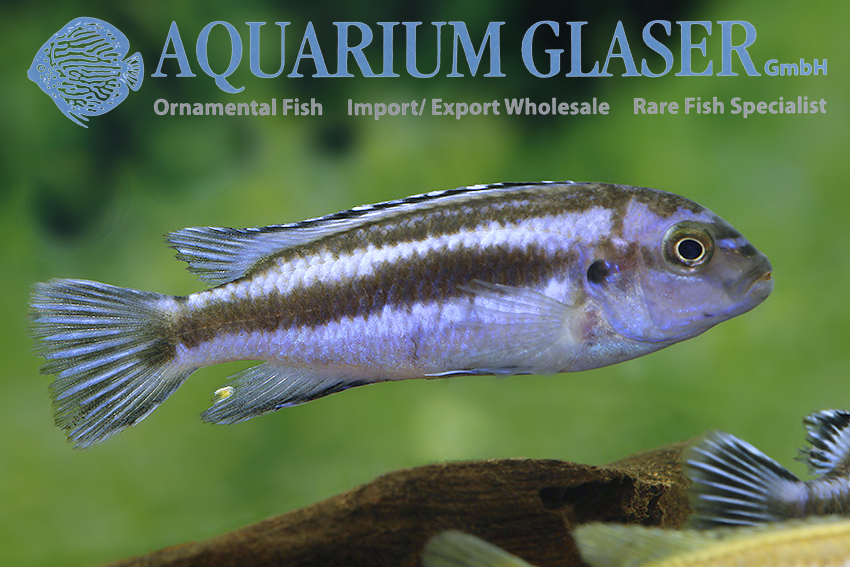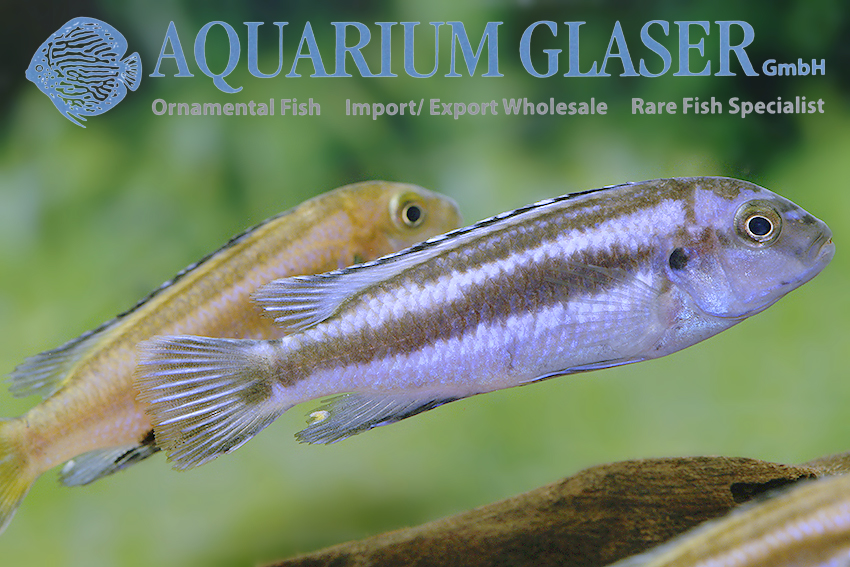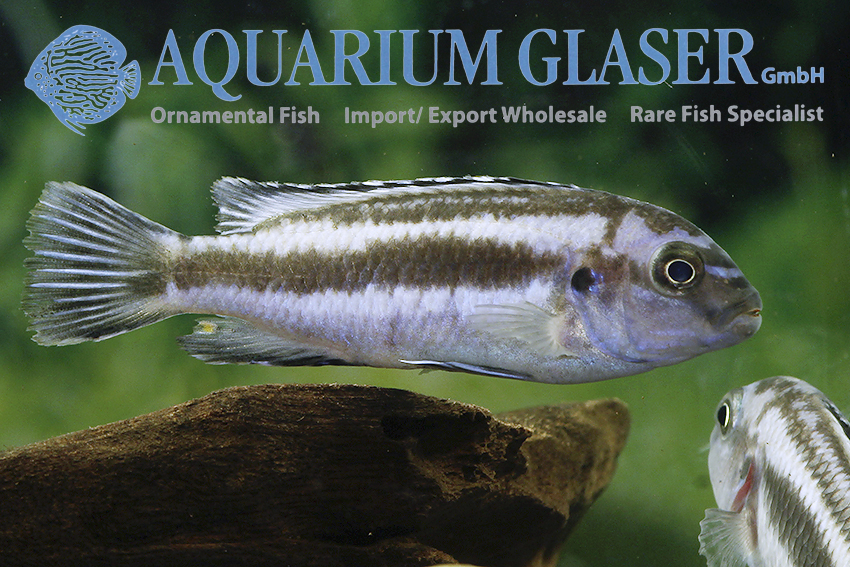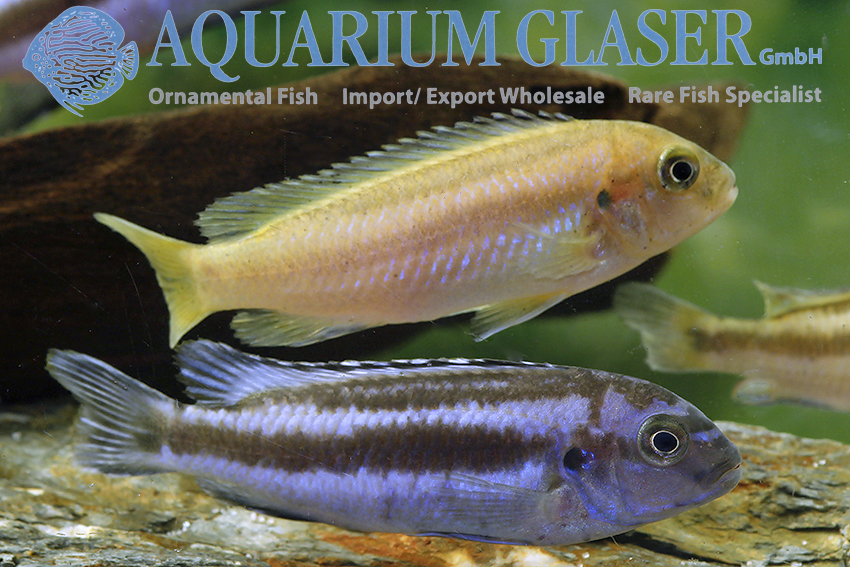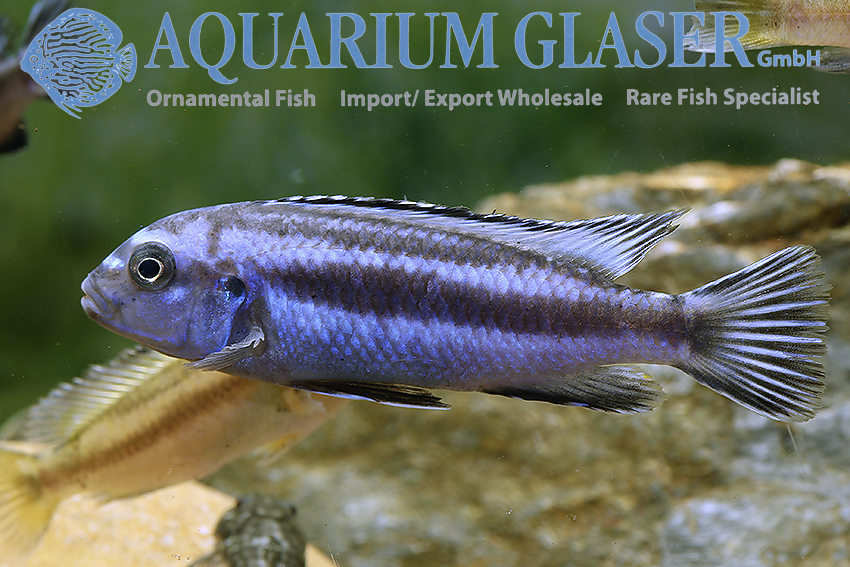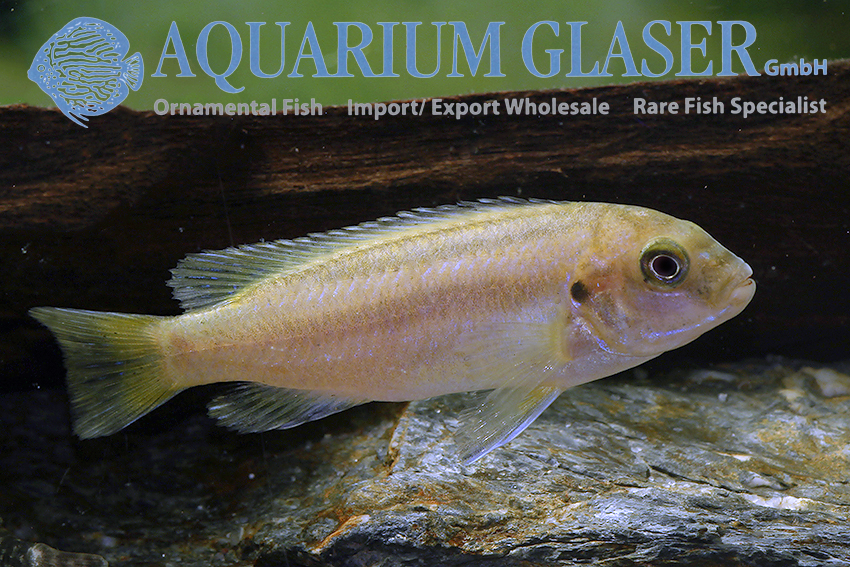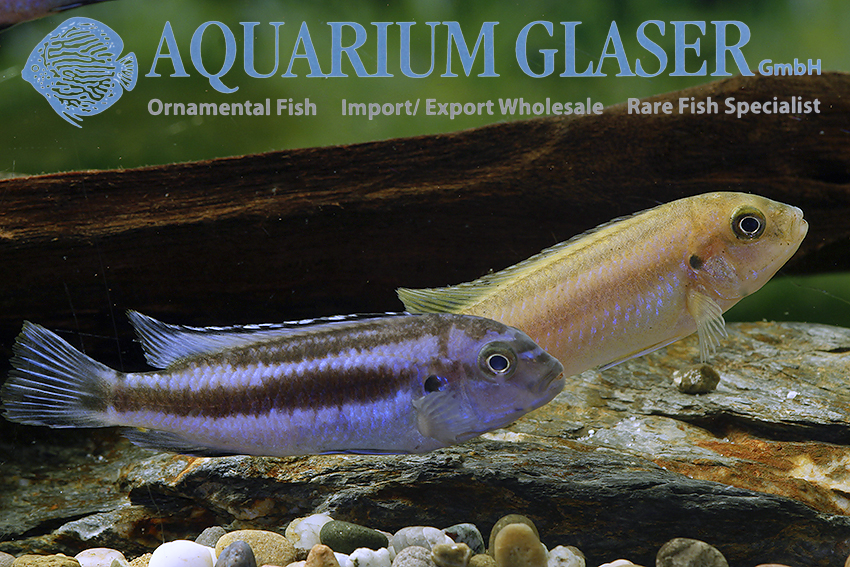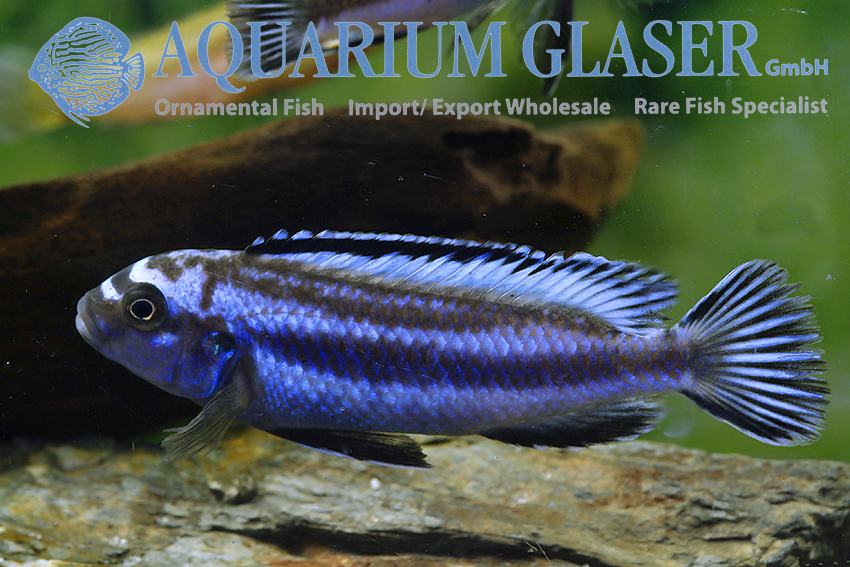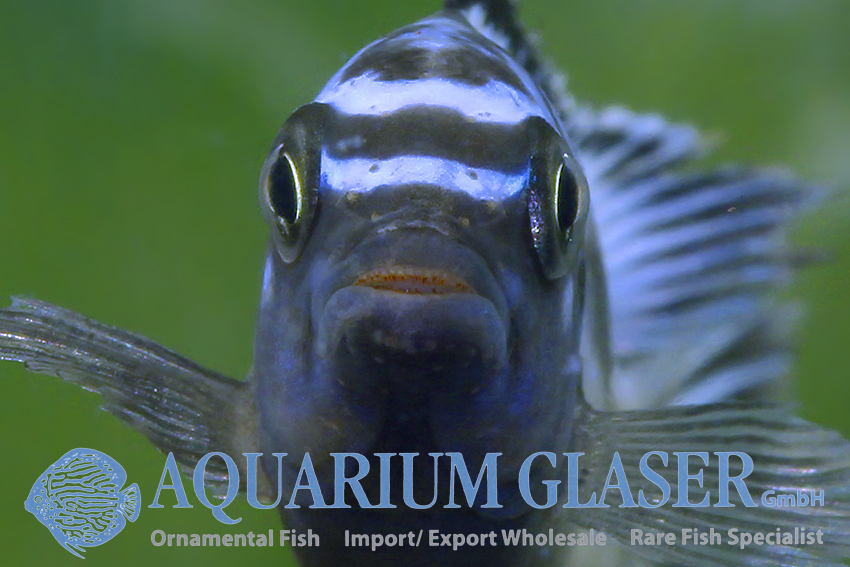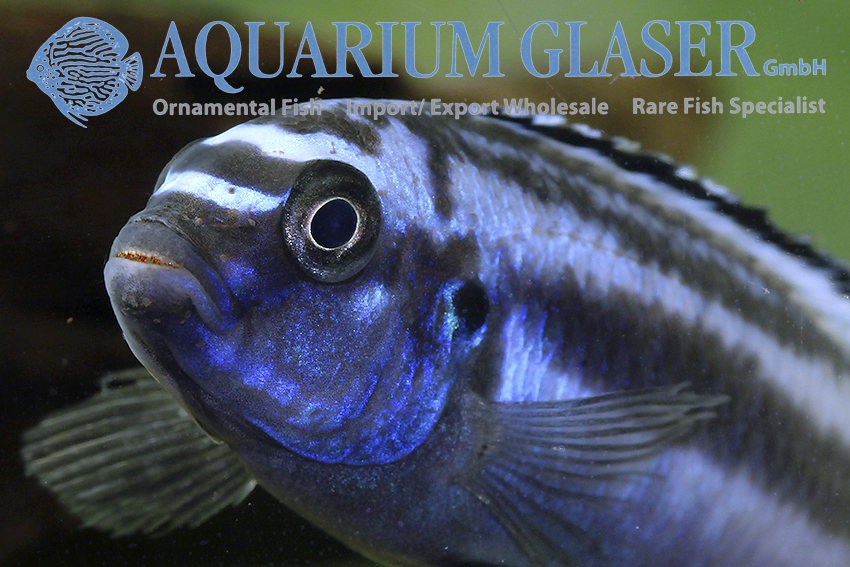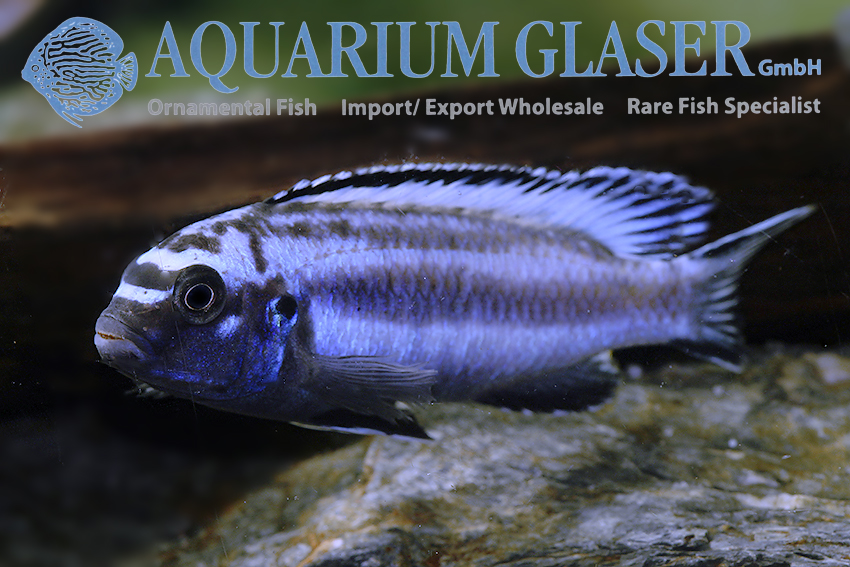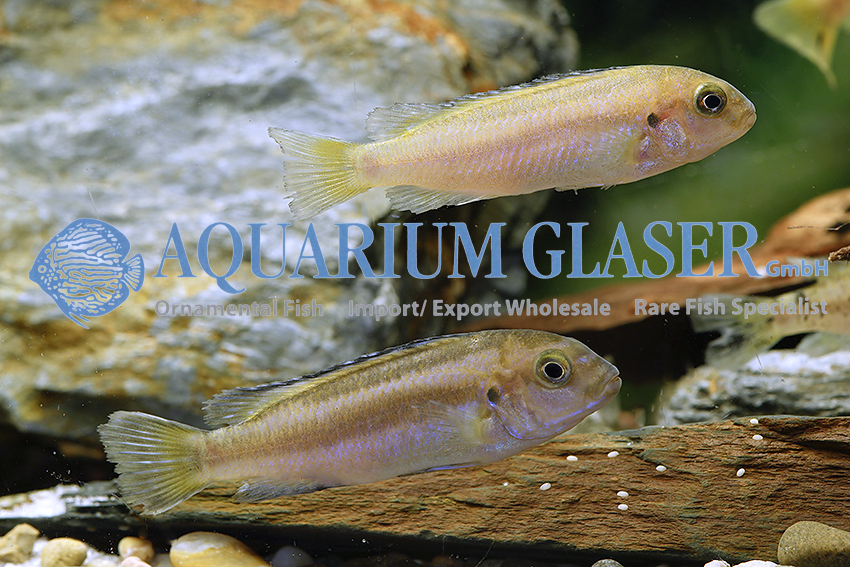The bluegray mbuna or the electric blue johanni (Melanochromis johannii) was imported so early (1972) from Lake Malawi for the hobby that one still made the effort to invent a popular name for it. This was later abandoned in view of the great number of species. In the wild, these fish, like many other Aufwuchs-feeding rock cichlids (mbunas), remain a good third smaller than in the aquarium, where they can grow to a maximum length of 12 cm. At about 5 cm in length, the males begin to color. They then get a bright blue base coloration, while the females remain orange. Juveniles show female coloration. However, when a male gets tired of being constantly beaten up by the boss (mbunas are quite aggressive fish), he puts on female clothes and then has peace for the time being. You can always recognize males disguised as females by the eggspots in the anal fin, which are missing in females.
The generic classification of the Mbunas is based to a large extent on the pattern of markings. Melanochromis has horizontal dark bars and in males the pattern reverses with the onset of sexual maturity, i.e., what was previously yellow becomes black, for example, and what was previously black becomes blue, for example, as in the well-known auratus cichlid, M. auratus. Because the latter does not occur in M. johannii, but the black streaking in males and females remains the same and only the basic coloration changes, it has been suggested to place M. johannii in Pseudotropheus. Some follow the suggestion, others do not. In the end, this is of rather minor importance in aquaristics.
Anyway, M. johannii has many friends since its first importation and is always available as offspring for aquarium enthusiasts all over the world. They are typical agame mouthbrooders in the female gender, i.e. after spawning the male does not take care of the female and the offspring. To keep these fish colorful and vital even after hundreds of generations in the aquarium, they must not be fed too fat and protein-rich, but need a diet rich in fiber and vitamins. The water should not be too cool (26-28°C) and the pH should be well above 7.5. A lot of water changes ensures low polluted water, which is also important. Because of the aggressiveness Mbunas are best kept in large groups of both sexes, 10 animals are good, 20 better. The aquarium should also have many hiding places where inferior specimens and breeding females can retreat.
For our customers: the animals have code 551500 on our stocklist. Please note that we supply exclusively to wholesalers.
Text & photos: Frank Schäfer





